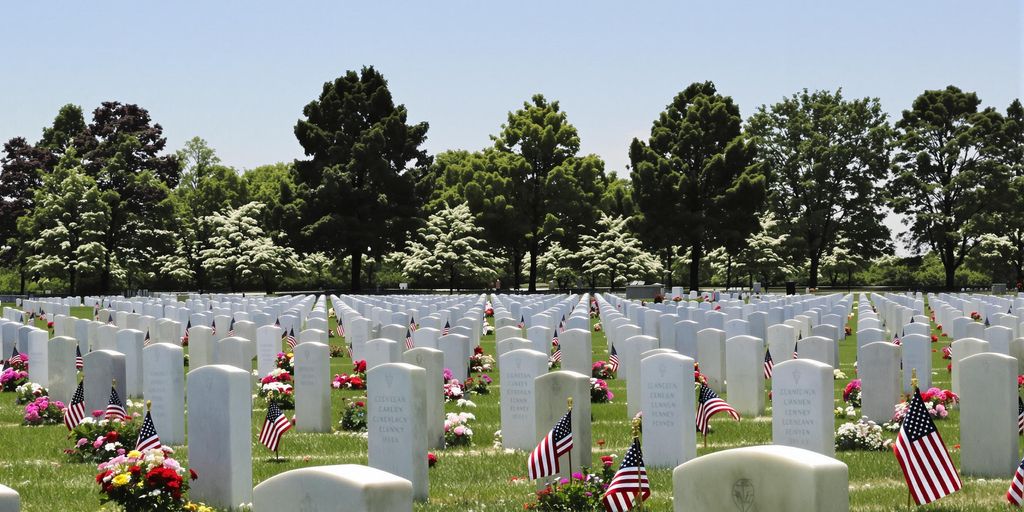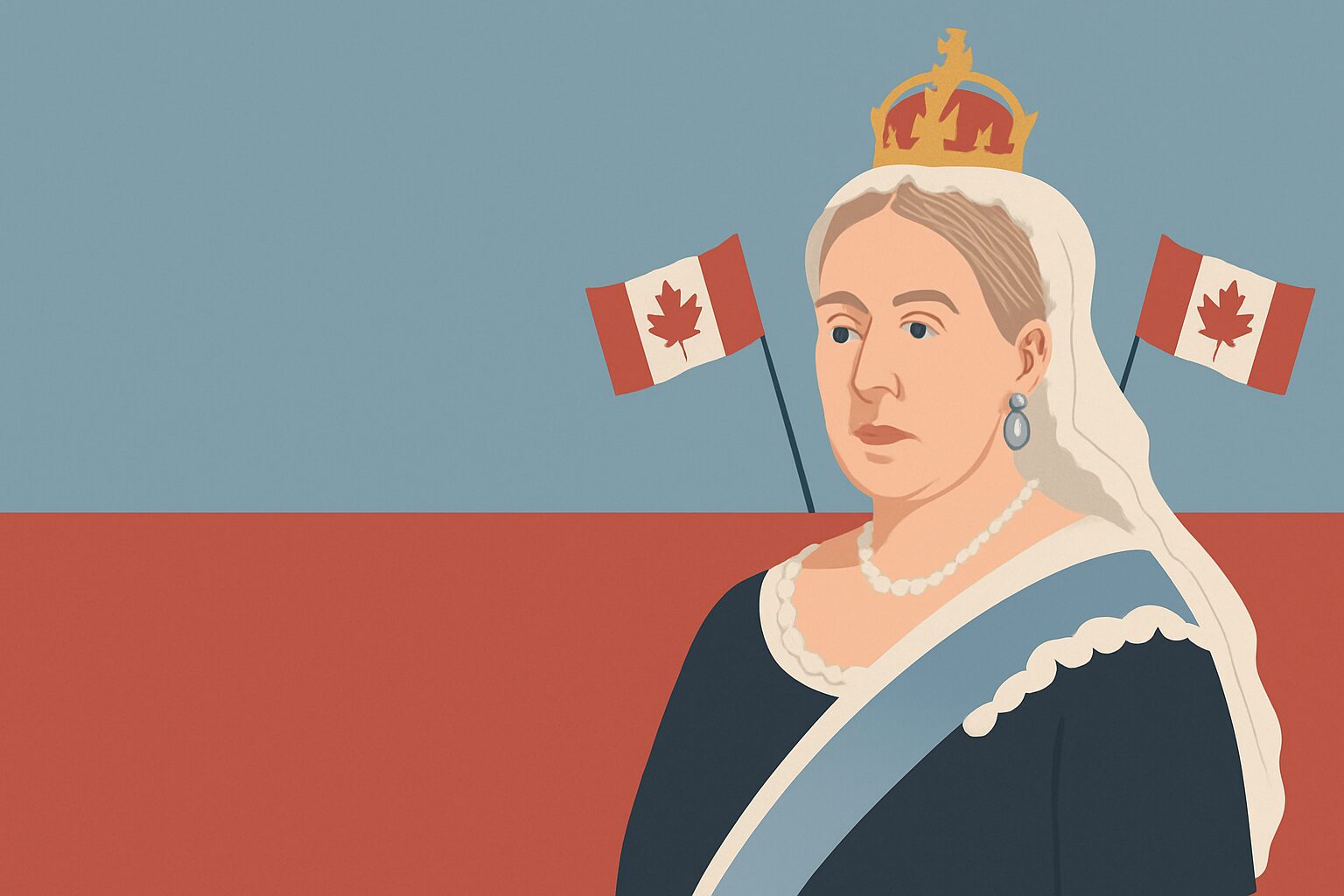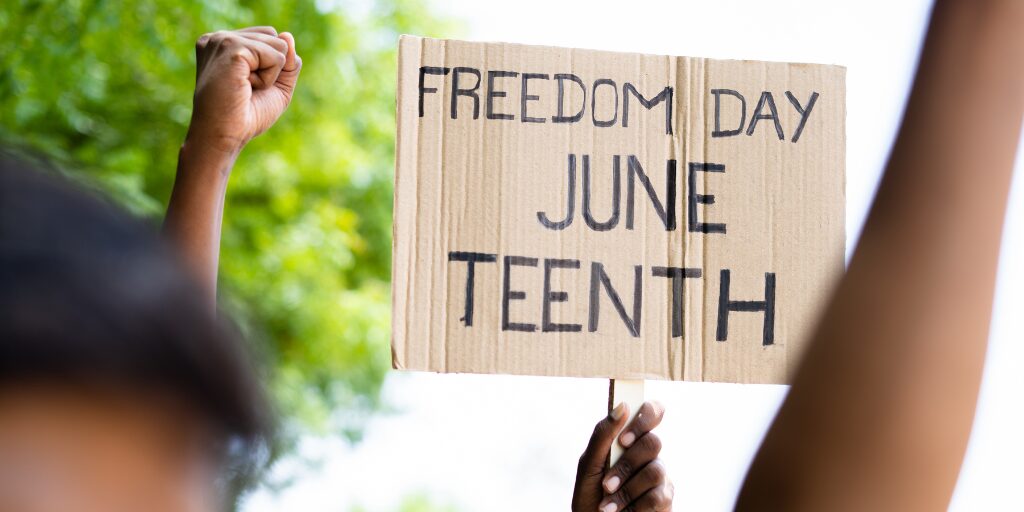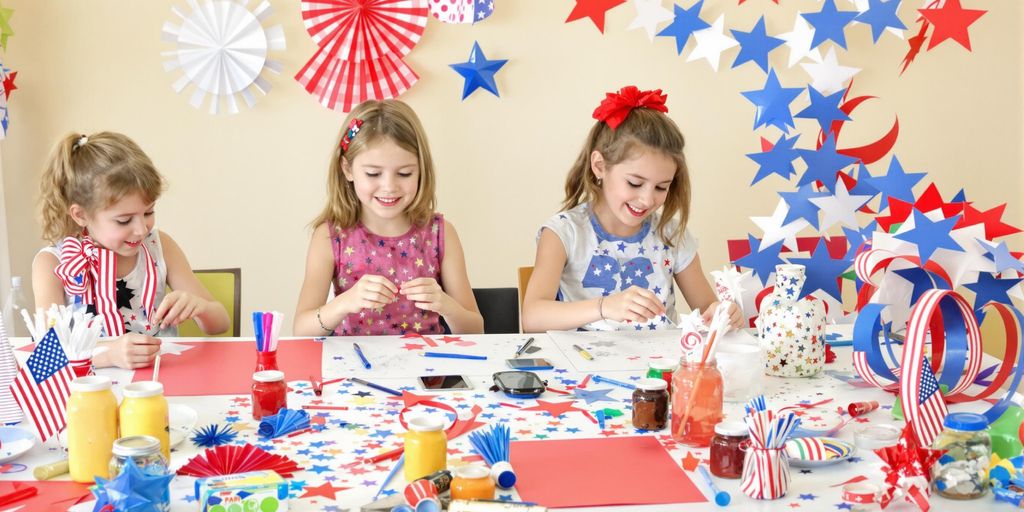Memorial Day is more than just a long weekend or the unofficial start of summer; it’s a day steeped in history and meaning. This holiday, observed on the last Monday in May, honors the brave men and women who lost their lives while serving in the U.S. military. From its roots in the aftermath of the Civil War to its evolution into a national day of remembrance, Memorial Day has become a significant occasion for reflection and gratitude. Let’s explore the history and traditions that shape this important day.
Key Takeaways
- Memorial Day began as Decoration Day after the Civil War, honoring fallen Union soldiers.
- The first official observance took place on May 30, 1868, at Arlington National Cemetery.
- In 1971, Memorial Day became a federal holiday, celebrated on the last Monday in May.
- Traditions include visiting cemeteries, participating in parades, and placing flags on graves.
- Memorial Day serves as a reminder of sacrifice and is often seen as the unofficial start of summer.
The Birthplace of Memorial Day and Early Observances
Origins in the Civil War
The Civil War, a brutal conflict that tore the United States apart, left a legacy of loss and a pressing need for national healing. The sheer number of casualties – both Union and Confederate – led to the establishment of national cemeteries. The war’s aftermath saw various local efforts to honor the fallen, setting the stage for a more unified, national day of remembrance. It’s interesting to think about how these early, scattered acts of mourning eventually coalesced into the holiday we know today. It wasn’t just one thing, but a bunch of different things happening at the same time, all pointing to the same need: to remember those who died.
First Decoration Day Ceremony
While multiple towns lay claim to hosting the “first” Memorial Day observance, one of the earliest documented events took place in Charleston, South Carolina. Formerly enslaved African Americans organized a ceremony to honor Union soldiers who had died in a Confederate prison camp. They reburied the remains and decorated the graves. This powerful act of remembrance highlights the complex racial dynamics of the time and the diverse motivations behind honoring the war dead. It’s a reminder that the story of Memorial Day isn’t just about battles and generals; it’s about ordinary people finding ways to cope with extraordinary loss. It is also important to note that in 1868, General John A. Logan, commander of the Grand Army of the Republic, officially proclaimed May 30th as Decoration Day, urging citizens to decorate the graves of war dead with flowers.
Significance of May 30
May 30th was chosen as Decoration Day for a practical reason: it wasn’t the anniversary of any particular battle. This was important because it allowed the day to be inclusive, honoring all who died in service, regardless of which side they fought on or when they fell. The date also coincided with a time of year when flowers were readily available, making it easier for people to decorate graves. It’s kind of neat how a simple thing like the availability of flowers played a role in shaping a national holiday. The selection of this date helped to solidify the tradition of remembrance and respect for fallen soldiers, setting the stage for the evolution of Decoration Day into the Memorial Day we observe today on the last Monday of May.
The Evolution of Memorial Day
From Decoration Day to Memorial Day
Originally called Decoration Day, the holiday’s purpose was to honor those who died in the Civil War. You know, placing flowers on graves and stuff. As time went on, and especially after World War I, people started to realize that there were a whole lot more wars and a whole lot more fallen soldiers to remember. So, the holiday gradually shifted to become a day for honoring all Americans who died while serving in the military, no matter the conflict. It just made sense to broaden the scope. The name “Memorial Day” became more common, reflecting this expanded purpose. It wasn’t an overnight change, but more of a slow evolution in how people thought about the day.
Federal Recognition in 1971
It took a while, but Memorial Day finally became an official federal holiday in 1971. Before that, it was celebrated on different days in different states, which was kind of a mess. The move to make it a federal holiday standardized the date across the country. This meant everyone was on the same page, and it made it easier to coordinate national events and observances. It’s kind of like when everyone finally agrees on the same time zone – things just run smoother. It also gave the holiday more weight and importance on a national level.
Impact of the Uniform Monday Holiday Act
The Uniform Monday Holiday Act, which also went into effect in 1971, played a big role in how Memorial Day is observed today. This act moved several federal holidays to Mondays, creating more three-day weekends. While this was great for travel and leisure, it also had some unintended consequences for Memorial Day. Some people argue that it shifted the focus away from the holiday’s original purpose of remembrance and towards a more general celebration of summer. You know, the whole “unofficial start of summer” thing. It’s a bit of a mixed bag – more time off is nice, but it can also overshadow the real reason for the holiday.
Memorial Day Traditions and Rituals
Visiting Cemeteries and Memorials
For many, Memorial Day is a time for solemn reflection. Visiting cemeteries and war memorials is a central tradition. People often place flowers or flags on the graves of fallen service members. It’s a way to personally connect with the sacrifices made for the country. I remember one year, my grandfather took me to visit the graves of his old army buddies. He told stories about each of them, and it really brought home the human cost of war. It’s more than just a day off; it’s a day to remember individuals.
Parades Across the Nation
Memorial Day parades are a common sight in towns and cities across the United States. These parades often feature veterans’ groups, marching bands, and local community organizations. They’re a public display of patriotism and remembrance. The parades serve as a way to honor those who served and to show support for current military members. Some of the biggest parades are held in major cities, but even small towns put on a show. I always liked seeing the old military vehicles and the veterans wearing their medals. It’s a good reminder of the country’s history and the people who defended it. You can find parades across the nation every year.
The Role of Flags and Flowers
Flags and flowers play a significant role in Memorial Day observances. The American flag is prominently displayed everywhere, often at half-staff until noon to honor the fallen. Flowers, especially poppies and roses, are placed on graves and memorials as a symbol of remembrance. The poppy, in particular, has become associated with Memorial Day due to its connection to World War I battlefields. It’s a simple but powerful way to show respect and gratitude. I usually buy a small bouquet to put on my uncle’s grave. It feels like a small gesture, but it’s important to me. It’s a visual reminder of the day’s purpose. Here’s a quick rundown:
- Flags: Displayed at half-staff until noon.
- Poppies: Symbolize remembrance and sacrifice.
- Roses: Often placed on graves as a sign of love and respect.
Cultural Significance of Memorial Day
Honoring Fallen Soldiers
Memorial Day is more than just a day off; it’s a day deeply embedded in American culture as a time to remember and honor those who died while serving in the military. It’s a solemn occasion to reflect on the sacrifices made to protect the nation’s freedoms. It’s not just about remembering names, but also about acknowledging the cost of war and the enduring impact it has on families and communities.
Community Gatherings
Across the country, communities come together on Memorial Day to participate in various events. These gatherings often include parades, memorial services, and moments of silence. Local veterans’ groups, schools, and civic organizations usually play a big role in organizing these events, fostering a sense of unity and shared remembrance. It’s a time for people to connect with their neighbors and show support for those who have lost loved ones in service to the country. I remember going to a parade when I was little, and even then, I could feel the weight of the day, even though I didn’t fully understand it.
Memorial Day as a Family Holiday
While Memorial Day is a time for national reflection, it also often serves as a time for families to gather. Many families use the long weekend to visit the graves of relatives who served, decorate their resting places with flags and flowers, and share stories about their lives. It’s a way to keep their memories alive and pass on the importance of service and sacrifice to younger generations. My family always has a cookout, but we always take a moment to remember my grandpa, who was a veteran. It’s a bittersweet day, for sure.
Memorial Day in Modern America
Contemporary Observances
Memorial Day today is observed in a variety of ways. While the core purpose remains honoring those who died in military service, the specific activities have evolved. Many people still visit cemeteries and memorials, placing flags and flowers on the graves of fallen soldiers. Parades continue to be a common sight in cities and towns across the country, often featuring veterans’ groups, military personnel, and community organizations. Wreath-laying ceremonies and moments of silence are also held to pay respects. It’s a time for reflection, remembrance, and gratitude for the sacrifices made by service members throughout American history.
Memorial Day Sales and Promotions
It’s hard to ignore the commercial aspect of Memorial Day. Retailers often hold big sales and promotions, marketing the holiday as a prime shopping opportunity. This can sometimes overshadow the solemnity of the occasion, leading to debates about the appropriateness of using a day meant for remembrance to push consumerism. Some argue that these sales are disrespectful to the memory of fallen soldiers, while others see them as a way to boost the economy and allow families to enjoy the long weekend.
The Unofficial Start of Summer
For many Americans, Memorial Day weekend marks the unofficial beginning of summer. People often use the three-day weekend for travel, barbecues, and outdoor activities. Beaches and parks become crowded, and families gather for picnics and celebrations. While enjoying these leisure activities, it’s important to remember the true meaning of the holiday and take time to honor the sacrifices of those who died for their country. Balancing the celebration of summer with the solemnity of remembrance is a challenge, but it’s a crucial part of observing Memorial Day in modern America.
Memorial Day Around the World
International Remembrance Days
It’s interesting to see how other countries honor their war dead. Many nations have their own versions of Memorial Day, often tied to specific historical events or conflicts. For example, Remembrance Day in Commonwealth countries, observed on November 11th, commemorates the end of World War I. It’s a day for reflection and honoring those who served in the armed forces. In France, Armistice Day is also celebrated on November 11th with similar solemnity. These days often involve parades, memorial services, and moments of silence.
Comparative Holidays
While the specific dates and traditions vary, the underlying sentiment of honoring those who died in service is a common thread. Some countries focus on all veterans, living or deceased, while others, like the U.S. with Memorial Day, specifically remember those who died. Here’s a quick look at some comparative holidays:
- Remembrance Day (Commonwealth countries): Focuses on WWI Armistice, honors all war dead.
- Armistice Day (France): Commemorates the end of WWI.
- Victory in Europe Day (Russia): Celebrates the end of WWII in Europe.
Global Perspectives on Mourning
The way societies mourn and remember war dead is shaped by their unique histories and cultural values. Some cultures emphasize public displays of grief, while others favor more private and personal forms of remembrance. The design of war memorials, the rituals performed at cemeteries, and the stories that are told about fallen soldiers all reflect these different perspectives. It really makes you think about how universal the experience of loss is, even if the way we deal with it isn’t.
The Role of Veterans in Memorial Day
Memorial Day is more than just a long weekend; it’s a time to reflect on the sacrifices made by those who served in the U.S. military. Veterans play a central role in ensuring the true meaning of the day is not lost. They participate in ceremonies, share their stories, and help educate the public about the cost of freedom. It’s a day where the nation should pause and listen to the voices of those who have given so much.
Veterans’ Organizations and Events
Veterans’ organizations are at the forefront of many Memorial Day events. These groups organize parades, memorial services, and community outreach programs. They work tirelessly to ensure that fallen soldiers are remembered and that their families are supported. These organizations provide a platform for veterans to connect with each other and with the wider community.
- Organizing local parades and memorial services.
- Providing support to Gold Star families.
- Educating the public about the history and significance of Memorial Day.
Personal Stories of Sacrifice
Perhaps the most impactful way to understand Memorial Day is through the personal stories of veterans and their families. These stories offer a glimpse into the realities of war and the sacrifices made by those who serve. Hearing these accounts can be a powerful reminder of the true cost of freedom. It is important to remember the fallen soldiers on this day.
Veterans’ Voices on Memorial Day
Veterans’ voices are essential in shaping the narrative of Memorial Day. They offer unique perspectives on the meaning of service, sacrifice, and remembrance. Their insights help to ensure that the holiday remains focused on honoring the fallen and supporting their families. It’s a time for the nation to listen and learn from those who have served. Many veterans participate in community gatherings to share their experiences.
Memorial Day and American Identity
National Unity and Commemoration
Memorial Day serves as a powerful reminder of shared values and national identity. It’s a day where differences are set aside as people come together to honor those who died for the country. This act of collective remembrance reinforces the idea of a unified America, bound by a common history and a shared sense of gratitude. It’s not just about mourning; it’s about celebrating the ideals these individuals fought to protect. The Civil War brought a new focus to death, sacrifice, and rebirth into the national consciousness. Memorial Day became a ritual to express these themes, connecting local communities to a broader sense of nationalism.
The Intersection of History and Memory
Memorial Day highlights the complex relationship between history and memory. The stories of fallen soldiers become part of the national narrative, shaping how future generations understand sacrifice and patriotism. It’s a time to reflect on the past, acknowledge the human cost of conflict, and consider the lessons learned. The holiday encourages a dialogue about the meaning of freedom, the responsibilities of citizenship, and the ongoing pursuit of a more perfect union. It’s a moment to consider how historical events continue to influence the present and shape the future.
Civic Responsibility and Reflection
Memorial Day calls on all citizens to engage in civic responsibility and thoughtful reflection. It’s more than just a day off; it’s an opportunity to consider the values that underpin American society and the sacrifices made to uphold them. This can involve:
- Participating in memorial services
- Volunteering in the community
- Educating oneself about military history
- Supporting veterans and their families
By actively participating in these activities, individuals can demonstrate their commitment to honoring the fallen and upholding the principles they defended. It’s a day to think about what it means to be an American and how each person can contribute to the nation’s ongoing story.
Challenges and Controversies Surrounding Memorial Day
Debates Over Commercialization
Memorial Day is meant to be a solemn day of remembrance, but it’s hard to ignore the huge sales and promotions that now surround it. You see ads everywhere, pushing everything from mattresses to cars. Some people feel this commercialization cheapens the holiday and distracts from its true purpose: honoring the fallen. It’s a tricky balance between remembering the sacrifices of service members and taking advantage of a long weekend for shopping. It’s not uncommon to hear people complain that the holiday has lost its meaning, becoming just another excuse for retailers to boost their sales. It’s a valid concern, and one that sparks debate every year.
Discussions on War and Peace
Memorial Day can also bring up difficult conversations about war itself. While the holiday is about honoring those who died in service, it also prompts reflection on the cost of conflict. Some use the day to advocate for peace and question the necessity of military intervention. These discussions can be sensitive, as they involve deeply held beliefs and emotions. It’s important to remember that honoring the fallen doesn’t necessarily mean glorifying war. It’s possible to honor fallen soldiers while still advocating for peaceful solutions and questioning the policies that lead to conflict. Finding common ground in these discussions can be challenging, but it’s a necessary part of understanding the complexities of Memorial Day.
Inclusivity in Commemoration
For a long time, Memorial Day observances primarily focused on certain groups of veterans, often overlooking the contributions and sacrifices of others. There’s been a growing push for more inclusive commemoration, recognizing the service of women, people of color, and LGBTQ+ veterans. This includes telling their stories, acknowledging their experiences, and ensuring they are represented in memorials and ceremonies. It’s about making sure that everyone who served and sacrificed is remembered and honored, regardless of their background. This push for inclusivity is an ongoing process, and it requires a willingness to listen to different perspectives and challenge traditional narratives. It’s about creating a more complete and accurate picture of American military history and ensuring that all veterans feel seen and valued. Here are some points to consider:
- Acknowledging the diverse experiences of veterans.
- Promoting representation in memorials and ceremonies.
- Educating the public about the contributions of underrepresented groups.
Reflecting on Memorial Day
So, as we gear up for Memorial Day each year, it’s important to remember what it’s really about. It’s not just a day off or the start of summer. It’s a time to honor those who gave their lives for our country. Whether you’re attending a parade, visiting a cemetery, or just spending time with family, take a moment to reflect on the sacrifices made by so many. Let’s keep their memory alive and show our gratitude. After all, that’s what this day is truly for.
Frequently Asked Questions
What is the main purpose of Memorial Day?
Memorial Day is a day to remember and honor the men and women who died while serving in the U.S. military.
When is Memorial Day celebrated?
Memorial Day is observed on the last Monday of May each year.
What was Memorial Day originally called?
Memorial Day was originally known as Decoration Day.
Why is May 30 significant for Memorial Day?
May 30 was chosen as the date for Decoration Day in 1868 because it was not the anniversary of any particular battle.
How did Memorial Day become a federal holiday?
Memorial Day became an official federal holiday in 1971 when Congress passed a law to recognize it.
What are some common ways people observe Memorial Day?
People often visit cemeteries, hold parades, and decorate graves with flags and flowers.
What does Memorial Day symbolize for Americans?
Memorial Day symbolizes national unity and a time for reflection on the sacrifices made by military personnel.
Are there any controversies surrounding Memorial Day?
Yes, some debates focus on the commercialization of the holiday and how to include all veterans in the commemoration.




